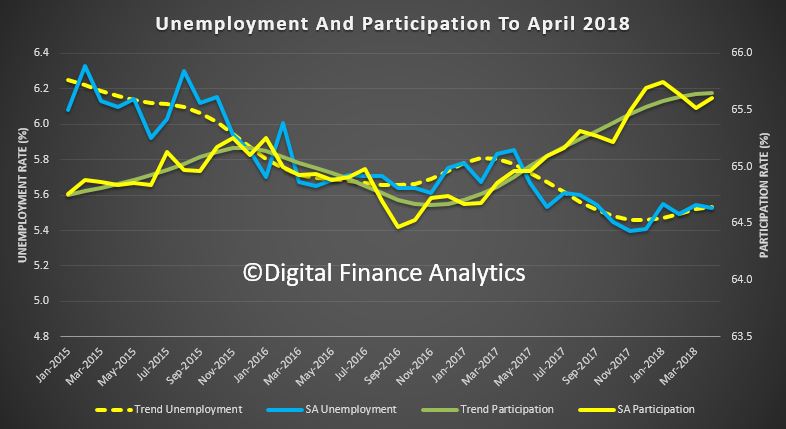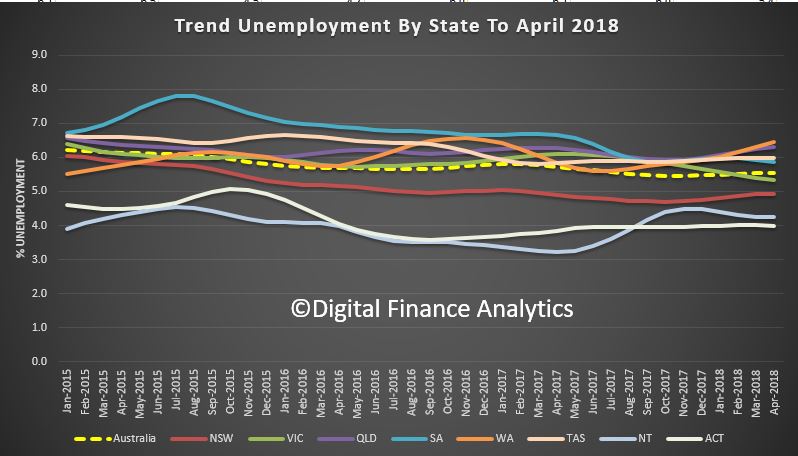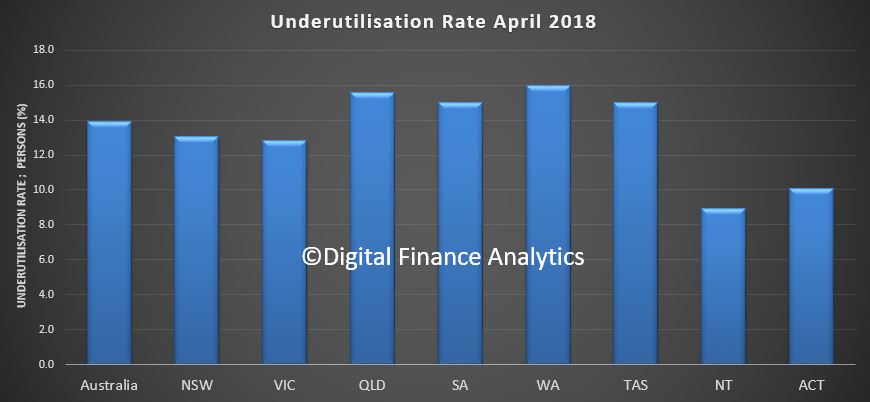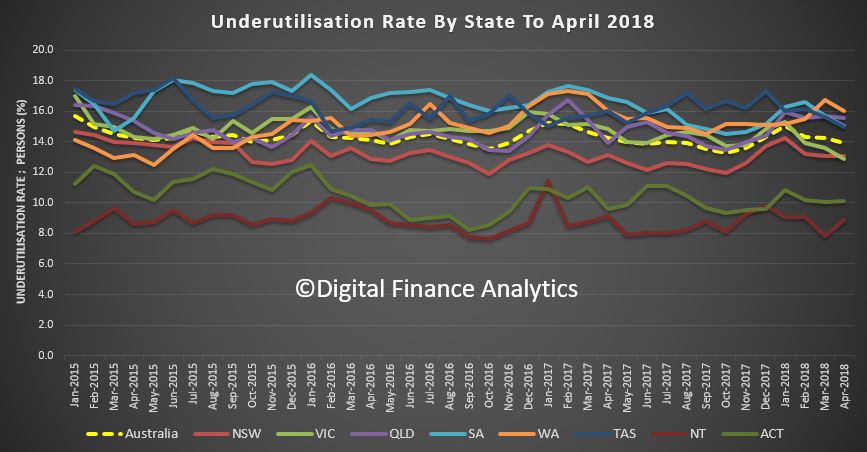The latest data from the ABS covers April 2018 employment. The trend unemployment rate rose from 5.53 per cent to 5.54 per cent in April 2018 after the March figure was revised down, while the seasonally adjusted unemployment rate increased 0.1 percentage points to 5.6 per cent. In fact employment growth is stalling.
 The trend participation rate increased to a further record high of 65.7 per cent in April 2018 and in line with the increasing participation rate, employment increased by around 14,000 with part-time employment increasing by 8,000 persons and full-time employment by 6,000 persons in April 2018. This continued the recent slowing of employment growth, particularly full-time employment growth. and the seasonally adjusted labour force participation rate increased slightly to 65.6 per cent.
The trend participation rate increased to a further record high of 65.7 per cent in April 2018 and in line with the increasing participation rate, employment increased by around 14,000 with part-time employment increasing by 8,000 persons and full-time employment by 6,000 persons in April 2018. This continued the recent slowing of employment growth, particularly full-time employment growth. and the seasonally adjusted labour force participation rate increased slightly to 65.6 per cent.
Over the past year, trend employment increased by 355,000 persons or 2.9 per cent, which was above the average year-on-year growth over the past 20 years (2.0 per cent).
The trend hours worked increased by 4.7 million hours or 0.3 per cent in April 2018 and by 3.3 per cent over the past year.
 Over the past year, the states and territories with the strongest annual growth in trend employment were New South Wales (3.8 per cent), Queensland (3.5 per cent) and the Australian Capital Territory (2.7 per cent). But unemployment is highest in WA at 6.4 per cent, QLD 6.3 per cent, TAS 6.0 per cent and SA at 5.9 per cent.
Over the past year, the states and territories with the strongest annual growth in trend employment were New South Wales (3.8 per cent), Queensland (3.5 per cent) and the Australian Capital Territory (2.7 per cent). But unemployment is highest in WA at 6.4 per cent, QLD 6.3 per cent, TAS 6.0 per cent and SA at 5.9 per cent.
The critical perspective is looking at underutilisation – or those in work who want more work. This is essentially unused space capacity. The latest data for April shows the highest rate of underutilisation resides in WA (where unemployment is also highest). TAS and SA are also quite high, while VIC and ACT have the lowest rates.
 And the trends really have hardly improved at all, taking account of seasonal variations.
And the trends really have hardly improved at all, taking account of seasonal variations.
 It is this underutilisation which explains the relatively how unemployed number, and the low wage growth we discussed yesterday.
It is this underutilisation which explains the relatively how unemployed number, and the low wage growth we discussed yesterday.
Finally, it is worth noting that as the ABS shift their samples, as they do each quarter, there is some variability in the baseline data, which introduces statistical noise into the system.
But the bottom line is there is nothing here to suggest we are going to see unemployment falling below 5%, which many believe is the rate at which wages growth may start to trend higher.
We are trapped in a low growth, low wage, high underutilised situation, and there is no easy way out given the current economic settings.
